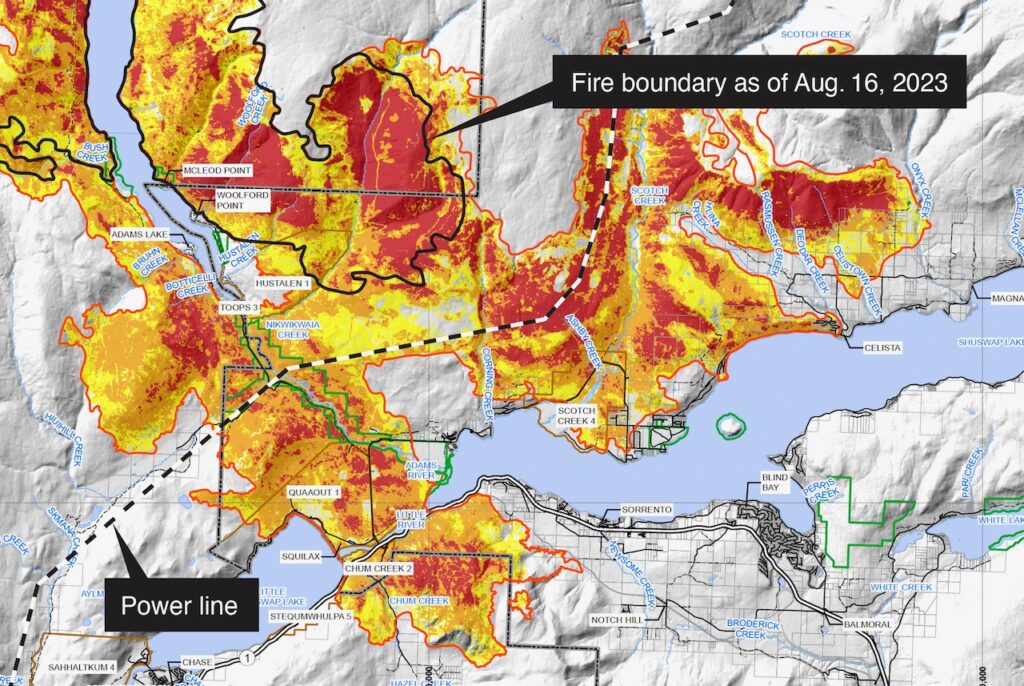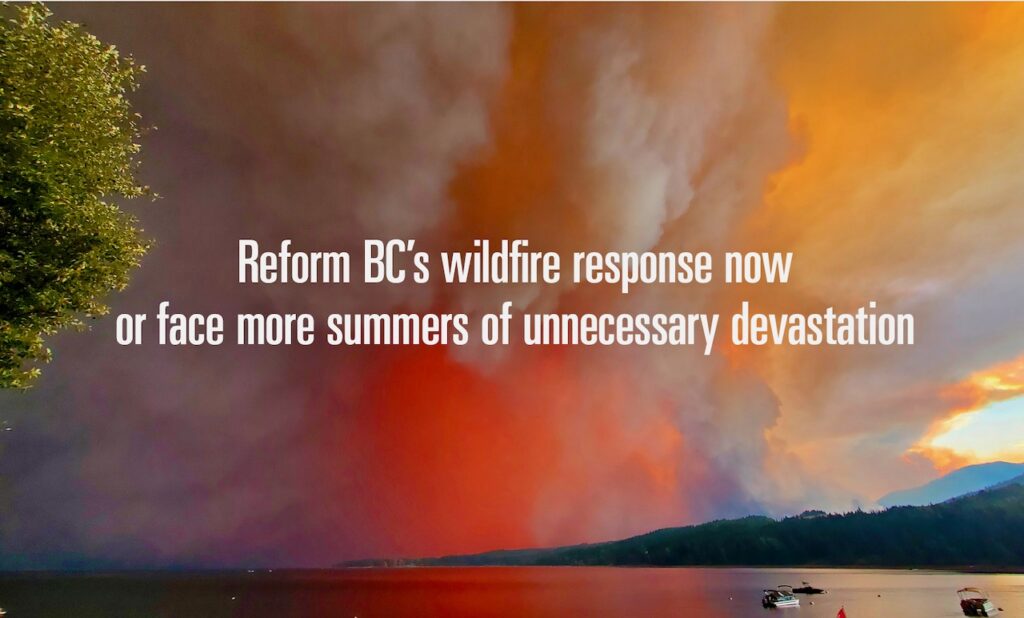
One year after the devastating firestorm that destroyed over 250 structures in the North Shuswap, Squilax and Adams Lake, the effort to bring accountability to those responsible for the disaster remains stuck in the slow lane. My efforts sparked two investigations and one preliminary scoping project. The major focus is the ongoing Forest Practices Board investigation to determine if the backburn was a “reasonable” action by the BC Wildfire Service (BCWS), which was only one of the four original complaints provided.
The process began on September 28th with a letter of notification provided to BCWS, and there was a timeline provided that it could take approximately eight months until a report was released. On October 30th the chief investigator, Tracy Andrews, came to Lee Creek with an assistant to interview me and do a field trip. Originally the plan was to also include two independent wildfire experts, but this plan was cancelled at the last moment.
Due to problems with her flight, the trip was shortened, and part of the interview had to be done via computer. Joining me was local wildfire expert, Stephen Moore. We drove up to the powerline where they saw how the controlled ignition had reversed in the windstorm and swept down and across the recently brushed and debris-laden powerline opening into Scotch Creek, Meadow Creek and Celista. I also provided her with many photos, along with the preliminary analysis by wildfire expert Bruce Morrow. At the end of November, Tracy spent two days with BCWS, who took her on a helicopter tour of the area.
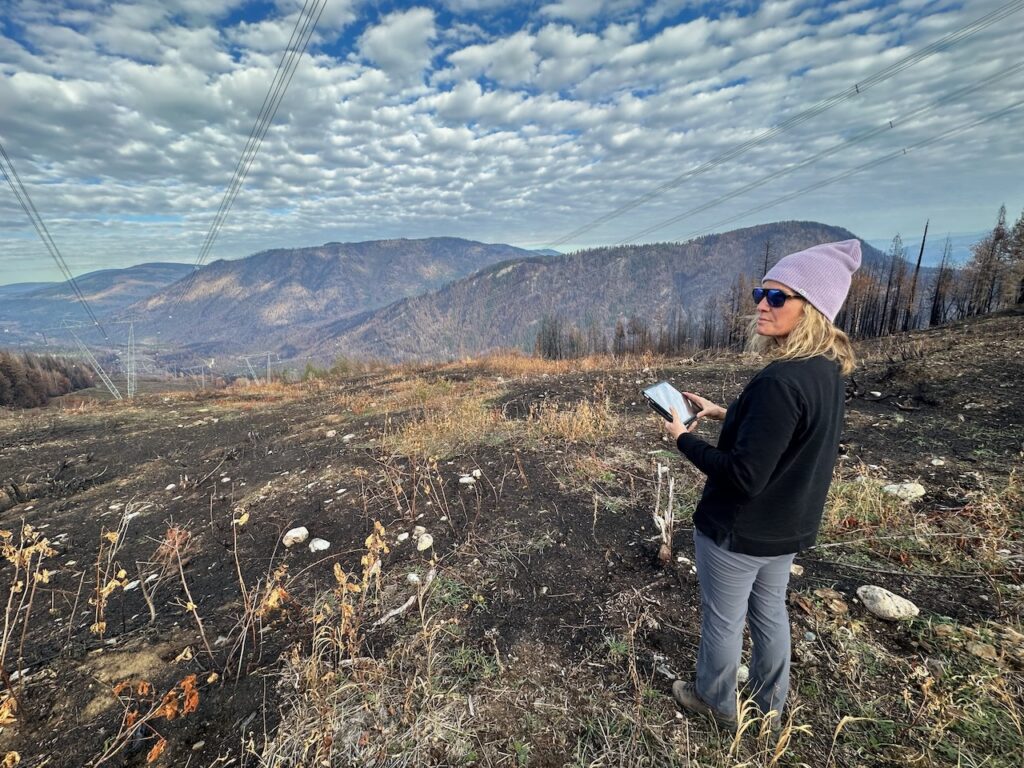
Two weeks later, investigative journalist Jesse Winter’s explosive piece about the backburn was published in the Globe and Mail. It revealed how a BCWS crew was trapped and nearly died when the backburn escaped, which resulted in a letter to Premier Eby from the BC Government Employees Union calling for the immediate dismissal of those responsible, as well as an investigation. As well, WorkSafe BC also began an investigation.
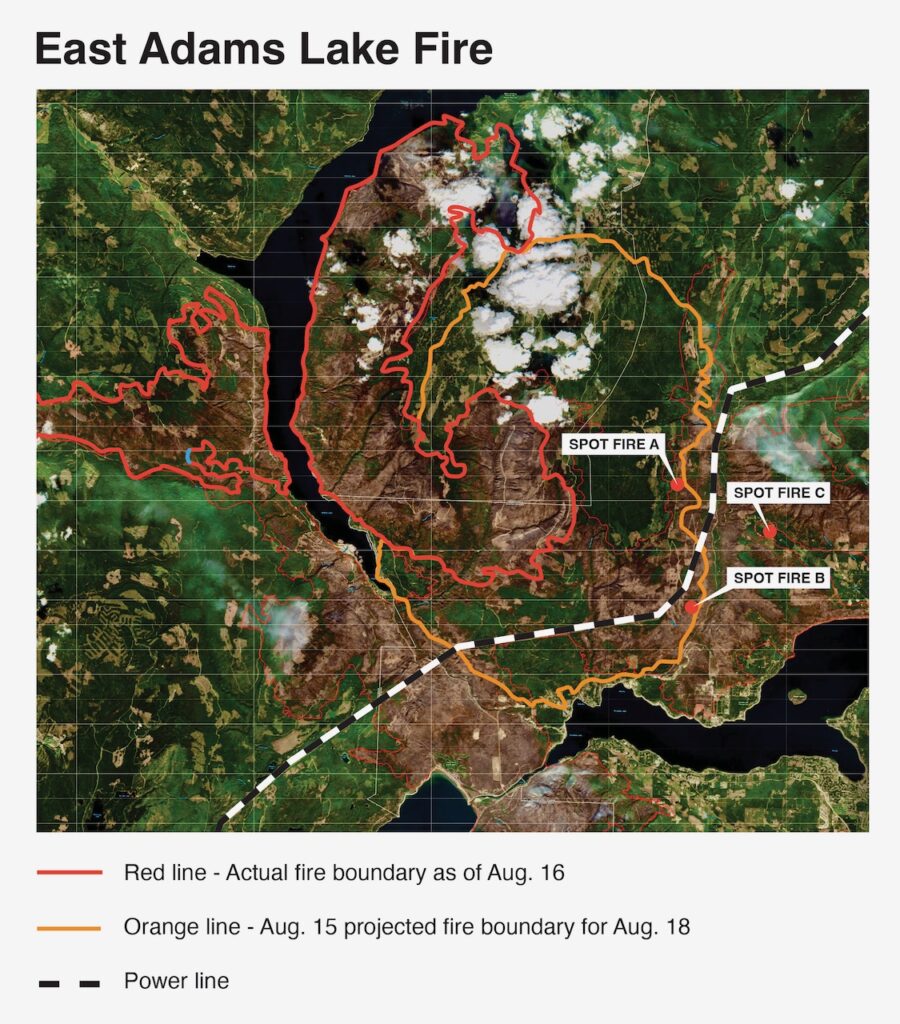
Winter’s article also revealed what Tracy explained as BCWS “side of the situation,” which was basically computer modelling that showed how there was a prediction that the fire would move into Lee Creek and Scotch Creek during the upcoming windstorm. It also described how BCWS did the backburn without a written plan, which the incident commander, Mark Healy, was quoted as saying, “this was the first time in his 32-year career that he had overseen a burn of this size without a written plan.”
The Forest Practices Board investigation process has two components. The investigator writes a draft report, and then the complainant is allowed to “fact check” the section that includes their input and can request changes. BCWS will also be able to review the section that provides their rationale. Once the review stage is complete, the actual Board studies the report and makes the determination. In May, Tracy informed me that she was nearly finished writing the report. But as of the end of July, there has been no communication from her, and she is currently on a summer break.
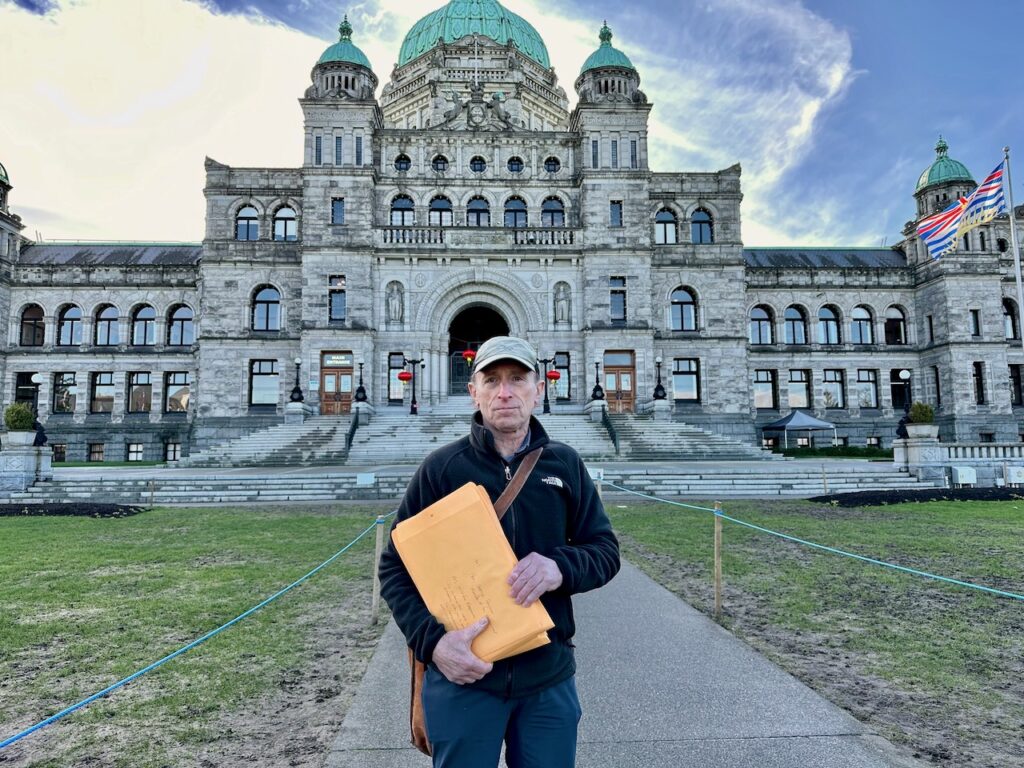
When I visited Victoria in February, I managed to meet with the manager of investigations for the Ombudsperson office and presented all the complaints. He decided then to investigate the issue of the failed evacuation order, which came too late and could have resulted in the loss of life. An investigator has been working on this issue since then and I have provided him with all the information available. Recently, he told me that his work is ongoing. However, he has had difficulty getting all the information he needs from BCWS, which was aware of where the backburn had escaped as there were helicopter observing the rapid spread of the fire and yet avoided issuing the order while insisting the backburn was a success.
The Ombudsperson investigation process results in a report that provides a “settlement” recommendation to resolve the concern. If the government agency agrees with the settlement, then the process is complete. Although this report is not made public, the complainant receives a copy and can share it. If the agency does not agree with the settlement, then the Ombudsperson get involved and issues a public report that is also presented to the legislature. The investigator hopes the process will be complete by the end of September.
As part of my effort to bring accountability, our ad hoc North Shuswap Defence Fund committee hired a lawyer to submit a formal Freedom of Information inquiry to receive all the BCWS files regarding the wildfire. This effort has been continuously delayed and the most recent news is that the files may become available on August 30th.
In February, I also managed to meet with the head of the Forest Practices Board special investigations. He agreed to do a scoping exercise to determine if they would do an investigation regarding how local contractors who offer to work on wildfires are told they must “stand down” or face court action. I provided names and details and he conducted ten phone interviews. Every contractor and forest company staff person he spoke with was unwilling to provide any details regarding this issue. The Ministry of Forests, of which BCWS is part of, has a reputation of retribution against any company that takes issue with their actions or lack of action, thus this investigation will never see the light of day. Every contractor and forestry professional I have spoken with has major concerns about BCWS policies and track record, yet none of them have been willing to go public with the exception of Bruce Morrow, RPF and Allan Willcocks, RPF, who are retired.
The efforts to bring accountability also morphed into a larger effort to reform the BCWS thanks to the involvement of Bruce Morrow, Allan Willcocks (now deceased) and other experts. Bruce and I met with a member of the Premier’s Task Force on Emergencies and presented our petition. This online petition that outlines what needs to change has to date received 4,433 signatures. While, in Victoria, I managed to meet with a representative of the Minister of Forests and in April, I met briefly and spoke later on the phone with the Deputy Minister of Forests who assured me that there would be public announcements regarding how the recommendations from the Task Force would be implemented. Other than the news about the plans for a wildfire school at TRU and more advanced computer modelling, there have been no press releases.
We are now at the end of another difficult wildfire season also known as summer. By most accounts BCWS is doing a better job at actioning fires and using aircraft. They did a great job of putting out the fire near Seymour Arm and above Silver Creek in Hullcar, and even used water bombers and retardant. There are now at least two, if not more, large water skimmers on loan from Ontario. However, they allowed the Savona fire to grow, and it destroyed 20 or more structures in the Venable Valley, where the residents were given a late evacuation order and had to flee through flames.
A key recommendation both in our petition and from the Task Force, was for BCWS to work more closely with local firefighting groups. After last year’s debacle here, countless small rural communities throughout the province have set up local fire brigades and many residents have taken the S-100 course to be certified. In the TNRD, BCWS has run a pilot program and is working closely with several rural firefighting groups. Perhaps, this type of cooperation will one day become formalized.
As climate chaos intensifies, governments throughout the world will need to focus on improving their abilities to both fight wildfires and take better measures at preventing fires. Every effort must be made to protect forested communities, including creating fuel breaks and growing deciduous trees rather than conifers. As temperatures rise, survival will most likely become humanity’s primary goal.
POSTSCRIPT
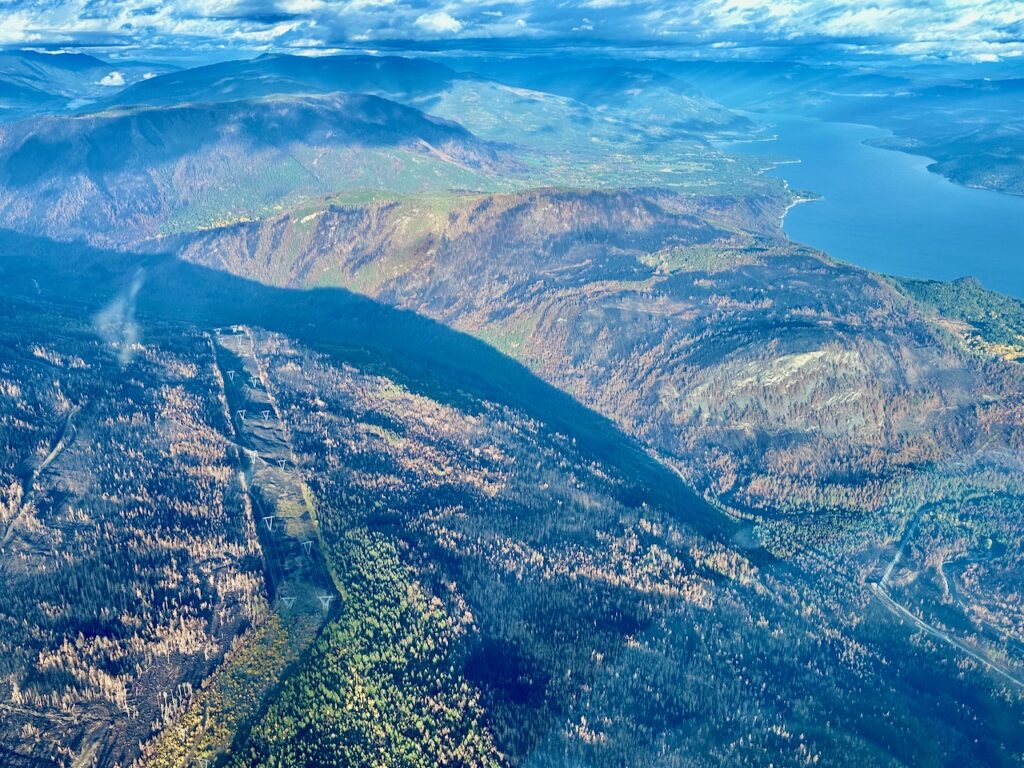
The campaign to reform B.C.’s wildfire response system includes this petition that has received over 5,100 signatures.
